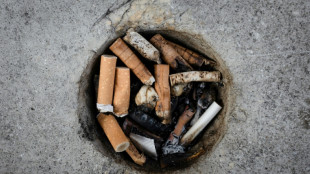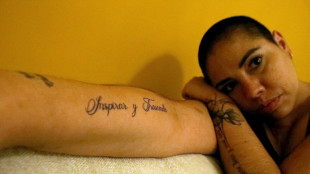
-
 Scandic Trust Group strengthens sales network with First Idea Consultant
Scandic Trust Group strengthens sales network with First Idea Consultant
-
Fleetwood and Lowry lift each other into Abu Dhabi lead

-
 Fleetwod and Lowry lift each other into Abu Dhabi lead
Fleetwod and Lowry lift each other into Abu Dhabi lead
-
New Zealand make changes after Barrett brothers' injuries as Scotland drop Van der Merwe

-
 Dallas Cowboys' Marshawn Kneeland dies at 24: franchise
Dallas Cowboys' Marshawn Kneeland dies at 24: franchise
-
Pegula dispatches Paolini to keep WTA Finals semis bid alive

-
 Dutch giants Ajax sack coach John Heitinga
Dutch giants Ajax sack coach John Heitinga
-
Kirchner on trial in Argentina's 'biggest ever' corruption case

-
 Amorim urges Man Utd to 'focus on future' after Ronaldo criticism
Amorim urges Man Utd to 'focus on future' after Ronaldo criticism
-
US judge drops criminal charges against Boeing over 737 MAX 8 crashes

-
 World must face 'moral failure' of missing 1.5C: UN chief to COP30
World must face 'moral failure' of missing 1.5C: UN chief to COP30
-
UK grandmother leaves Indonesia death row to return home

-
 Garcia broken nose adds to Barca defensive worries
Garcia broken nose adds to Barca defensive worries
-
Tight UK security ahead of match against Israeli club

-
 Ethiopia's Afar region says attacked by Tigray forces
Ethiopia's Afar region says attacked by Tigray forces
-
Nancy Pelosi, Democratic giant, Trump foe, first woman House speaker, to retire

-
 Israel strikes Hezbollah targets in Lebanon
Israel strikes Hezbollah targets in Lebanon
-
Burger strikes as South Africa restrict Pakistan to 269-9 in second ODI

-
 Stocks slip as investors weigh earnings, tariffs
Stocks slip as investors weigh earnings, tariffs
-
Police say 19 held after raid at Swedish start-up Stegra to be deported

-
 Kante returns as France seek to clinch World Cup berth
Kante returns as France seek to clinch World Cup berth
-
Marcus Smith starts at full-back as England ring changes for Fiji

-
 Kolisi 100th Test 'no distraction' for Erasmus' South Africa
Kolisi 100th Test 'no distraction' for Erasmus' South Africa
-
Teetering Belgian government given more time to agree budget

-
 Merz backs EU plan to protect steel sector from Chinese imports
Merz backs EU plan to protect steel sector from Chinese imports
-
New Zealand make Scotland changes after Barrett brothers' injuries

-
 'Roy of the Rovers story' -- Farrell handed Ireland debut for Japan Test
'Roy of the Rovers story' -- Farrell handed Ireland debut for Japan Test
-
Stones backs Man City team-mate Foden to pose England dilemma for Tuchel

-
 Djokovic to face Alcaraz in ATP Finals groups
Djokovic to face Alcaraz in ATP Finals groups
-
Facing climate 'overshoot', world heads into risky territory

-
 Springbok skipper Kolisi to play 100th Test against France
Springbok skipper Kolisi to play 100th Test against France
-
Typhoon Kalmaegi hits Vietnam after killing 140 in Philippines

-
 Bank of England leaves rate unchanged before UK budget
Bank of England leaves rate unchanged before UK budget
-
Germany recall Sane, hand El Mala debut for World Cup qualifers

-
 India thump Australia to take 2-1 lead in T20 series
India thump Australia to take 2-1 lead in T20 series
-
Cameroon's Biya, world's oldest president, sworn in for 8th term

-
 Flick holding firm on Barca high line despite defensive woes
Flick holding firm on Barca high line despite defensive woes
-
Battered US businesses eye improved China trade at Shanghai expo

-
 France opt for Le Garrec as Dupont replacement for 'best team ever' South Africa
France opt for Le Garrec as Dupont replacement for 'best team ever' South Africa
-
Drugmaker AstraZeneca profit jumps as US business grows

-
 'Vibe coding' named word of the year by Collins dictionary
'Vibe coding' named word of the year by Collins dictionary
-
Vietnam evacuates thousands from coast ahead of Typhoon Kalmaegi

-
 European stocks fall after gains in Asia, US
European stocks fall after gains in Asia, US
-
MotoGP legend Agostini admires Marc Marquez's 'desire to win'
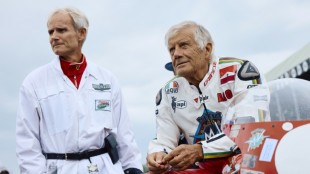
-
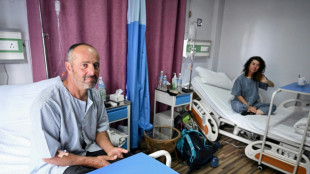 Nepal searches for avalanche victims
Nepal searches for avalanche victims
-
Hezbollah rejects any negotiations between Lebanon and Israel

-
 Chapman blitz leads Black Caps to tight T20 victory over West Indies
Chapman blitz leads Black Caps to tight T20 victory over West Indies
-
France urges EU to sanction Shein platform

-
 France opt for Le Garrec as Dupont replacement for South Africa Test
France opt for Le Garrec as Dupont replacement for South Africa Test
-
Turmoil in tiaras at Miss Universe pageant in Thailand
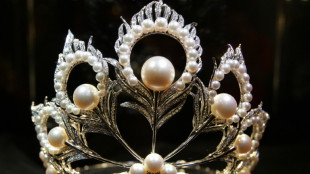

Grey area: chilling past of world's biggest brain collection
Countless shelves line the walls of a basement at Denmark's University of Odense, holding what is thought to be the world's largest collection of brains.
There are 9,479 of the organs, all removed from the corpses of mental health patients over the course of four decades until the 1980s.
Preserved in formalin in large white buckets labelled with numbers, the collection was the life's work of prominent Danish psychiatrist Erik Stromgren.
Begun in 1945, it was a "kind of experimental research," Jesper Vaczy Kragh, an expert in the history of psychiatry, explained to AFP.
Stromgren and his colleagues believed "maybe they could find out something about where mental illnesses were localised, or they thought they might find the answers in those brains".
The brains were collected after autopsies had been conducted on the bodies of people committed to psychiatric institutes across Denmark.
Neither the deceased nor their families were ever asked permission.
"These were state mental hospitals and there were no people from the outside who were asking questions about what went on in these state institutions," he said.
At the time, patients' rights were not a primary concern.
On the contrary, society believed it needed to be protected from these people, the researcher from the University of Copenhagen said.
Between 1929 and 1967, the law required people committed to mental institutions to be sterilised.
Up until 1989, they had to get a special exemption in order to be allowed to marry.
Denmark considered "mentally ill" people, as they were called at the time, "a burden to society (and believed that) if we let them have children, if we let them loose... they will cause all kinds of trouble," Vaczy Kragh said.
Back then, every Dane who died was autopsied, said pathologist Martin Wirenfeldt Nielsen, the director of the collection.
"It was just part of the culture back then, an autopsy was just another hospital procedure," Nielsen said.
The evolution of post-mortem procedures and growing awareness of patients' rights heralded the end of new additions to the collection in 1982.
A long and heated debate then ensued on what to do with it.
Denmark's state ethics council ultimately ruled it should be preserved and used for scientific research.
- Unlocking hidden secrets -
The collection, long housed in Aarhus in western Denmark, was moved to Odense in 2018.
Research on the collection has over the years covered a wide range of illnesses, including dementia, schizophrenia, bipolar disorder and depression.
"The debate has basically settled down, and (now people) say 'okay, this is very impressive and useful scientific research if you want to know more about mental disease'," the collection's director said.
Some of the brains belonged to people who suffered from both mental health issues and brain illnesses.
"Because many of these patients were admitted for maybe half their life, or even their entire life, they would also have had other brain diseases, such as a stroke, epilepsy or brain tumours," he added.
Four research projects are currently using the collection.
"If it's not used, it does no good," says the former head of the country's mental health association, Knud Kristensen.
"Now we have it, we should actually use it," he said, complaining about a lack of resources to fund research.
Neurobiologist Susana Aznar, a Parkinson's expert working at a Copenhagen research hospital, is using the collection as part of her team's research project.
She said the brains were unique in that they enable scientists to see the effects of modern treatments.
"They were not treated with the treatments that we have now," she said.
The brains of patients nowadays may have been altered by the treatments they have received.
When Aznar's team compares these with the brains from the collection, "we can see whether these changes could be associated with the treatments," she said.
S.Abdullah--SF-PST

